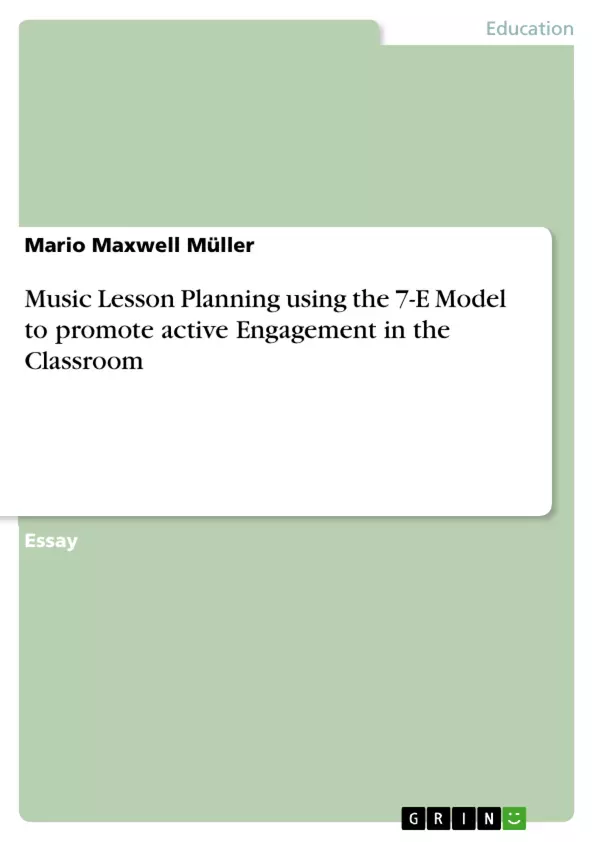The following paper will present the importance of lesson planning, emphasizing the use of the seven e-models to promote creative arts whilst encouraging students to actively engage in the classroom. Integrating science, technology, engineering, arts, and mathematics are essential key areas of curriculum development within private International Schools. Extending the learning experiences by making them more fun, exciting, and meaningful by promoting high levels of engagement, interaction, communication, and sharing of ideas and opinions.
Inhaltsverzeichnis (Table of Contents)
- Abstract
- Keywords
- Lesson Objectives
- Using Bloom's Taxonomy
- Elicit
- Engage
- Explore
- Explain
- Elaborate
- Evaluate
- Extend
Zielsetzung und Themenschwerpunkte (Objectives and Key Themes)
This paper explores the importance of lesson planning in music education, particularly using the 7-E model to enhance student engagement in the classroom. The author advocates for integrating STEAM (Science, Technology, Engineering, Arts, and Mathematics) into the curriculum, emphasizing the role of active learning experiences in promoting creativity, communication, and shared knowledge.
- The importance of lesson planning in music education.
- Utilizing the 7-E model to promote active student engagement.
- Integrating STEAM into the curriculum.
- Developing creative arts skills through music.
- Encouraging student interaction, communication, and sharing of ideas.
Zusammenfassung der Kapitel (Chapter Summaries)
- Abstract: This section introduces the paper's focus on lesson planning and its application in promoting active student engagement in music education. It highlights the importance of integrating STEAM into the curriculum and creating engaging learning experiences.
- Keywords: This section presents the main keywords related to the paper's topic, including arts, curriculum, education, engineering, International Baccalaureate Programme, innovation, science, and technology.
- Lesson Objectives: This section outlines the specific learning objectives for the Baroque period music lesson, focusing on student understanding of key elements, composition, and performance skills.
- Using Bloom's Taxonomy: This section details how Bloom's Taxonomy is applied to the music lesson, outlining the cognitive levels of learning and the corresponding activities for each level.
- Elicit: This section describes the introductory activity where the teacher draws on student prior knowledge to elicit their understanding of the Baroque period.
- Engage: This section explains the engaging activity where students work in pairs to identify instruments and share their observations.
- Explore: This section focuses on a comprehension activity where students explore the characteristics of the Baroque period through a reading section and class discussion.
- Explain: This section details how the teacher explains key characteristics of the Baroque period and allows students to share their understanding.
Schlüsselwörter (Keywords)
The primary focus of this paper is on the integration of STEAM elements within the music curriculum, particularly emphasizing the use of the 7-E model for active student engagement. Key themes include lesson planning, student engagement, creativity, collaboration, communication, and the application of Bloom's Taxonomy in music education. The paper also references specific curriculum frameworks and resources, such as Edexcel GCSE and the International Baccalaureate Programme.
- Quote paper
- Mario Maxwell Müller (Author), 2022, Music Lesson Planning using the 7-E Model to promote active Engagement in the Classroom, Munich, GRIN Verlag, https://www.grin.com/document/1280787



